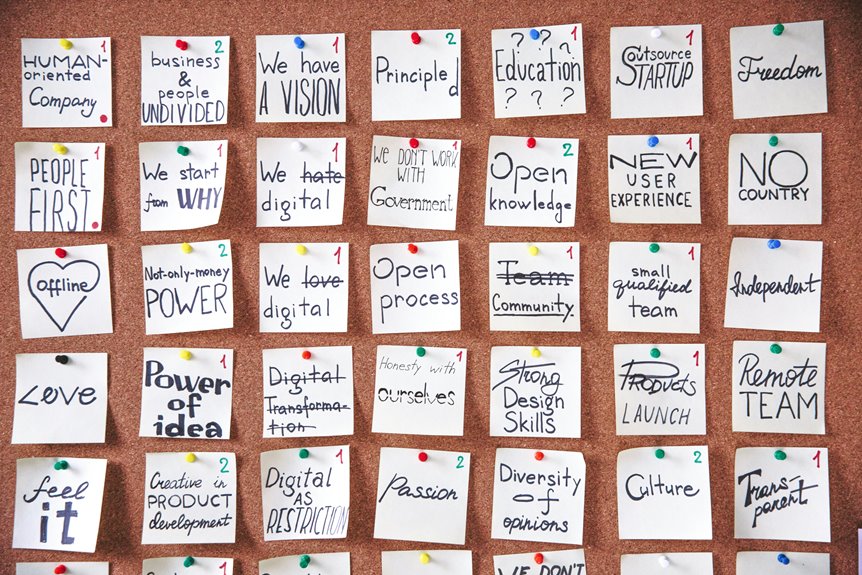Essentials of Organizational Development 3383082851

The essentials of organizational development serve as a strategic framework for enhancing effectiveness within organizations. By focusing on systematic change, leaders can identify strengths and weaknesses through thorough assessments. This process fosters collaboration and open communication, which are crucial for cultivating a culture of continuous improvement. Understanding these dynamics prompts a closer examination of how organizations can adapt to challenges and drive performance, raising important questions about the implementation of these principles in practice.
Understanding Organizational Development
Organizational development (OD) serves as a strategic framework for enhancing an organization’s effectiveness through systematic change.
It emphasizes the importance of organizational assessment to identify strengths and weaknesses, ensuring strategic alignment with overarching goals.
By fostering collaboration and open communication, OD empowers individuals and teams, promoting a culture of continuous improvement and adaptability.
This approach offers the freedom necessary for innovation and growth within the organization.
Key Principles of Effective Change
Effective change within organizations hinges on key principles that foster a supportive environment.
Clear communication strategies ensure that all stakeholders are informed and aligned, while employee involvement and engagement create a sense of ownership and commitment to the change process.
Together, these elements facilitate smoother transitions and enhance organizational resilience.
Clear Communication Strategies
How can organizations ensure that their change initiatives resonate with all stakeholders?
Effective communication strategies hinge on active listening and robust feedback mechanisms. By fostering an environment where stakeholders feel heard, organizations can tailor their messages to address concerns and aspirations.
This collaborative approach not only enhances understanding but also strengthens relationships, ultimately driving successful change initiatives and promoting organizational freedom.
Employee Involvement and Engagement
Successful change initiatives require more than just clear communication; they also depend on the meaningful involvement and engagement of employees at all levels.
Effective strategies must prioritize employee feedback and incorporate motivation strategies that resonate with individual aspirations.
Building a Culture of Continuous Improvement
Although organizations may implement various strategies to enhance performance, fostering a culture of continuous improvement remains a critical element for sustained success.
Key components include:
- Process optimization to streamline operations.
- Feedback loops that encourage employee input and innovation.
- Collaborative efforts across departments to share best practices.
Enhancing Team Dynamics
Frequently, organizations overlook the intricate dynamics that underpin effective teamwork, which can significantly impact overall performance.
Enhancing team dynamics requires fostering team collaboration and establishing robust conflict resolution strategies. By addressing interpersonal relationships and encouraging open communication, organizations can create an environment where diverse perspectives thrive.
Ultimately, this empowers teams to navigate challenges, innovate solutions, and achieve collective goals with greater efficiency and satisfaction.
Developing Leadership Skills
In the context of developing leadership skills, the integration of effective communication techniques and emotional intelligence is crucial.
These elements not only enhance interactions within teams but also foster an environment conducive to collaboration and trust.
Effective Communication Techniques
Effective communication techniques serve as a cornerstone for developing leadership skills within organizational settings.
Leaders must master the art of conveying messages clearly while being attuned to nonverbal cues. To enhance effectiveness, they should focus on:
- Active listening to foster trust.
- Clarity in messaging to avoid misunderstanding.
- Empathy to connect with team members.
These strategies empower leaders to inspire and engage their teams.
Emotional Intelligence Development
Emotional intelligence development is a critical component in cultivating effective leadership skills within organizations.
By enhancing emotional awareness and self-regulation, leaders can improve interpersonal relationships and conflict resolution.
Implementing empathy training and active listening fosters social skills, while motivation techniques and stress management strategies build emotional resilience.
This holistic approach empowers leaders to navigate challenges, ultimately promoting a collaborative and thriving organizational culture.
Measuring Organizational Success
Measuring organizational success requires a multifaceted approach that goes beyond traditional financial metrics.
Effective evaluation hinges on identifying key performance metrics and success indicators, which may include:
- Employee engagement levels
- Customer satisfaction scores
- Innovation and adaptability measures
Conclusion
In conclusion, the Essentials of Organizational Development underscores the critical need for systematic change to enhance effectiveness. By fostering collaboration and open communication, organizations can create a culture where continuous improvement flourishes. As the saying goes, “many hands make light work,” and this principle is vital in developing leadership skills and enhancing team dynamics. Ultimately, a strategic approach to measuring success ensures that organizations remain resilient and adaptable in an ever-evolving landscape.



